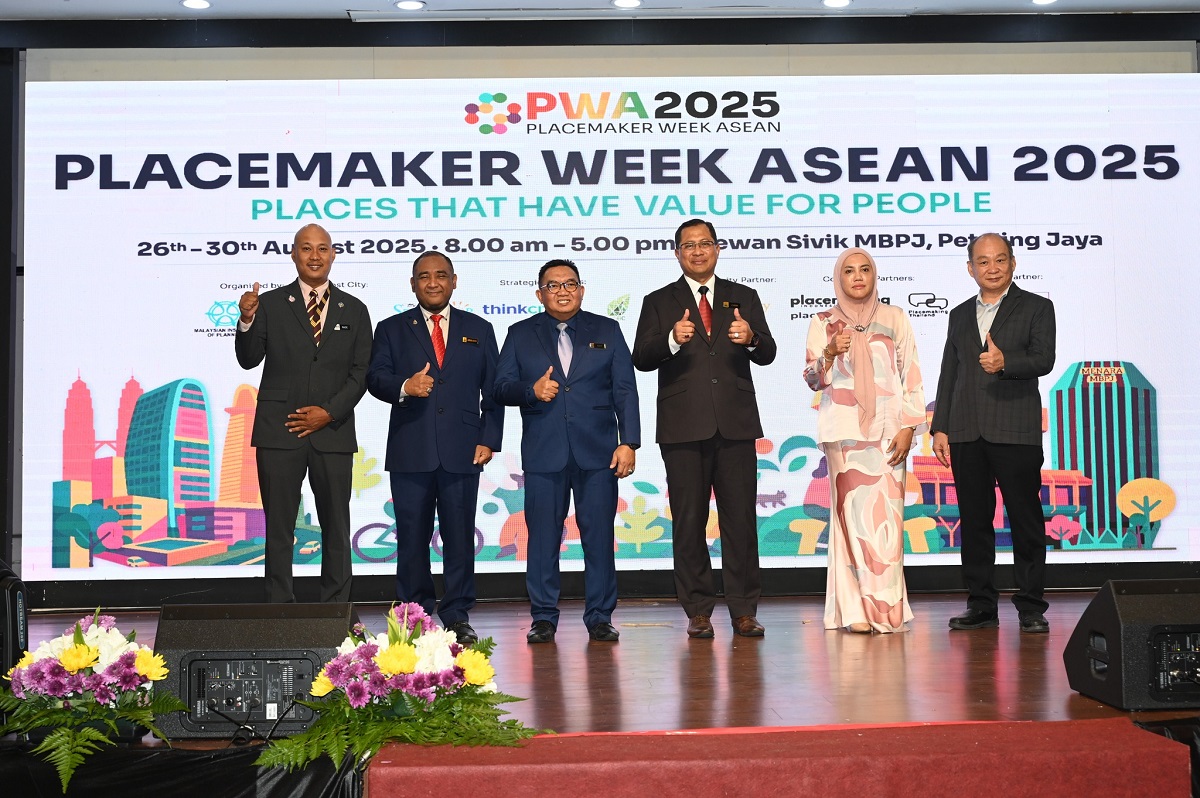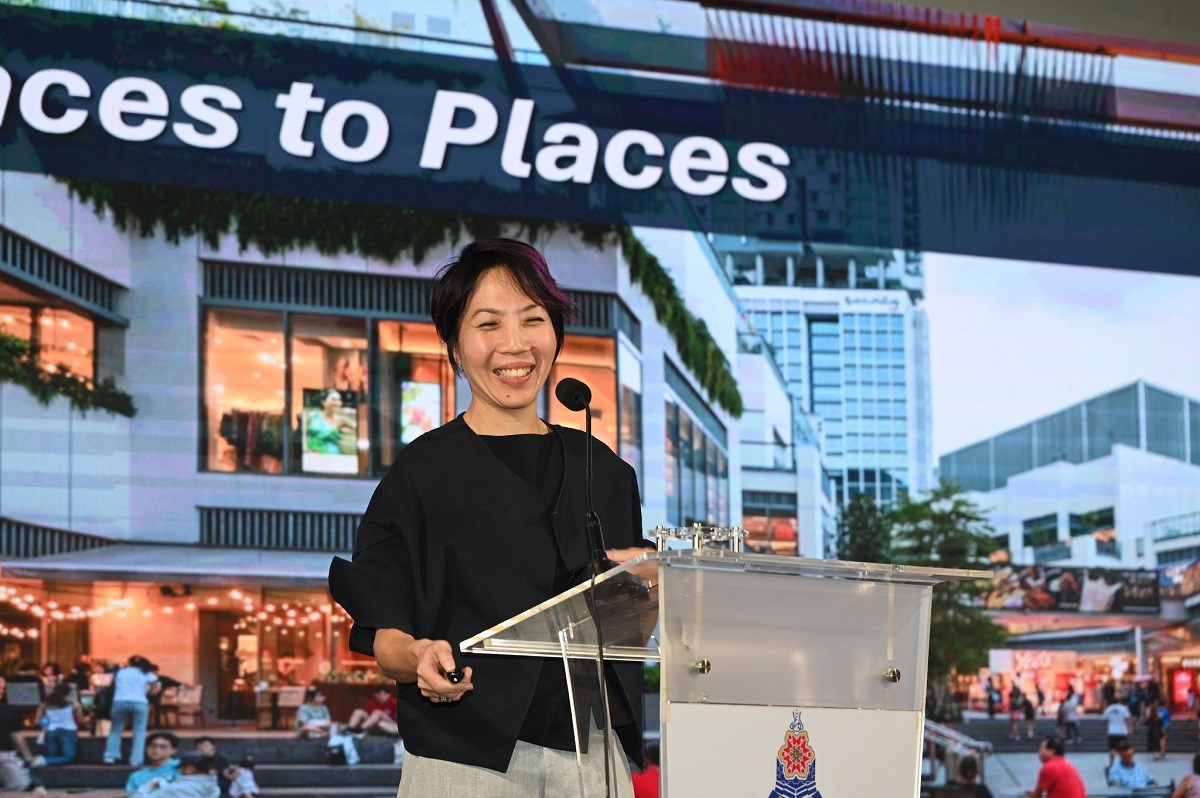
- “Communal design is not about replicating traditional structures, but about adapting their principles. For example, shared courtyards, open streets, and flexible community rooms in new developments can recreate the same sense of belonging that the longhouse offers,” Barbara pointed out.
PETALING JAYA (Aug 28): Urban challenges such as loneliness and depression could be addressed through better city projects that encourage social interaction and well-being.
This was highlighted during the Placemaker Week Asean (PWA) 2025, organised by Petaling Jaya City Council (MBPJ) in collaboration with the Malaysian Institute of Planners (MIP), Placemaking Malaysia, and other regional partners.
PWA 2025 convenor and co-chair Lee Jia Peng also called on governments to work more closely with placemakers to shift how cities are planned, creating a more people-centred model.
Read also
Placemaker Week Asean 2025: Urban spaces should be inclusive and elevate women’s voices
However, she noted that: “It’s not enough to expect the government to do everything. We all need to chip in. Placemaking in Malaysia is largely volunteer-driven, built on passion to make cities healthier and more connected”.
The five-day event from Aug 26 to 30 at MBPJ Civic Hall, held under the theme “Places that have Value for People,” features 49 speakers, including 25 international experts, focusing on climate and cities, the returns on placemaking, community empowerment, and the role of the government.
Lee said the conference offers something different for every participant, whether they are practitioners, community leaders, or newcomers to placemaking.
For those unfamiliar with the field, she hopes the sessions would inspire them to take charge in their own communities by identifying local needs and stepping up as leaders.
For architects and consultants, she hopes the conference will push them to see buildings not just as “cement and bricks” but as vessels for people to find meaning, identity, and belonging.
Petaling Jaya focuses on people-first placemaking
Petaling Jaya mayor Haji Mohamad Zahri Haji Samingon said the city is committed to ensuring inclusivity, accessibility, and youth participation in future urban planning.
“Petaling Jaya is proud to be Malaysia’s first United Nations Children's Fund (Unicef) Child-Friendly City and one of the nation’s Happiest Cities (in 2023),” he told the press during the second day of the PWA 2025.
He highlighted that among others, PJ has introduced toy libraries and inclusive public facilities designed with affordability and accessibility in mind as part of its ongoing effort to improve community well-being and liveability.

“Through PWA 2025, we reaffirm our commitment to community-based development and to keeping PJ liveable, friendly, and sustainable. We also hope to set an example for other cities in the region,” Zahri said.
He added that PWA 2025 will highlight both local and international placemaking and universal design projects, while providing space for communities, including vulnerable groups, to share their views in urban planning.
“With strong participation from regional and local stakeholders, PWA 2025 aims to drive people-first urban development and build more liveable, human-centred cities,” he stated.
Layered public spaces in Singapore
Singapore Conservation group director and Urban Redevelopment Authority urban design Mei Chou said Singapore’s small size meant public spaces had to be carefully planned and layered into existing developments.
“That included making sure paths, parks and connections worked not just for people but also for the natural environment.
“As an example, Singapore’s highest pedestrian bridge links green areas across a busy road while doubling as a popular public space with views of the southern coastline,” she said during her presentation.
Chou also added that streets have been redesigned to prioritise pedestrians and create open, social areas rather than car-dominated routes.
“For instance, Singapore’s Guoco Midtown integrates 30 thematic gardens and public plazas throughout its mixed-use precinct, creating a green, walkable environment that blends offices, housing and community spaces.
“Similarly, Paya Lebar Quarter (PLQ) features over 100,000 sq ft of public green areas, elevated walkways and connections to the city’s park connector network, ensuring developments serve both residents and the wider urban ecosystem,” she explained.
Designing for an ageing population
Myanmar-based Doh Eain Property and Design director Tun Ye Wai stressed the importance of preparing for an ageing population, creating neighbourhoods with accessible housing, healthcare, and public transport, while prioritising pedestrians and social street-level spaces.
“New mixed-use projects are now being designed with community spaces at their core, integrating homes, offices, and shops alongside green corridors to ensure developments serve both residents and the wider urban ecosystem,” he said during his presentation at the “How Placemaking is Driving the Growth of Public or Private Places” panel session.
He also pointed out that successful urban planning requires input from the community itself, stating that residents should be given a stronger voice in shaping the spaces they use daily.
“Such approaches not only improve liveability but also foster a sense of ownership and belonging, which is key to long-term sustainability in city development,” he added.
Lessons from Iban longhouses
Community builder Barbara Dubah Jabu said the Iban longhouse in Sarawak remains one of the most powerful examples of communal design, where architecture itself fosters social connection.
“The ruai, a wide, shared veranda, functions as the heart of the longhouse, bringing families together daily for rituals, decision-making, and cultural practices,” she stated during her presentation at the “Placemaking Scene in East Malaysia” panel session.
Barbara explained that this type of design naturally encourages inclusivity and participation. Unlike modern developments where residents often live in isolation, the longhouse model ensures that spaces are not just for shelter but for building relationships and collective identity.
“Such indigenous design principles could inspire contemporary placemaking, where streets, housing blocks, and public areas are shaped to prioritise community well-being rather than individual convenience.
“Communal design is not about replicating traditional structures, but about adapting their principles. For example, shared courtyards, open streets, and flexible community rooms in new developments can recreate the same sense of belonging that the longhouse offers,” she said.
As Penang girds itself towards the last lap of its Penang2030 vision, check out how the residential segment is keeping pace in EdgeProp’s special report: PENANG Investing Towards 2030.
TOP PICKS BY EDGEPROP

Rawang Integrated Industrial Parks
Rawang, Selangor

Jalan Chow Kit / Jalan Putra
KL City, Kuala Lumpur

Telok Panglima Garang Industrial Zone
Telok Panglima Garang, Selangor

Kota Kemuning -Loan reject Completed Unit ! 34x80
Kota Kemuning, Selangor

Kota Kemuning - Duoble Storey Corner . Owner Fast let Go !
Kota Kemuning, Selangor

Kota Kemuning Rumah Tepi ! Freehold 42x87
Kota Kemuning, Selangor



















